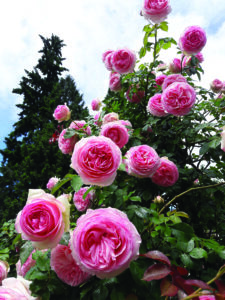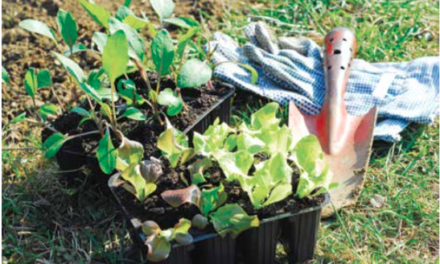
When planting roses, and for any of them to live up to its potential, it must be planted in a full sun location, with good air flow around it and in well drained soil.
Welcome to June, which is National Rose and Perennial Flower Month.
Roses are one of the most recognizable flowers in the world with more than 150 wild rose species and 30,000-plus cultivated varieties.
Roses are organized into these different categories:
• Hybrid Tea: A popular class of rose with ornate blooms that sprout from long stems, making them perfect for cutting;
• Shrub: A cross between Hybrid Tea and Polyantha roses, that are tough, reliable and disease resistant. They bloom repeatedly from late spring to well into the fall, making them ideal for the landscape;
• Floribunda: A cross between Hybrid Tea and Polyantha roses, these are great for mixed borders and larger flower beds. They produce a profusion of flowers continuously from late spring into fall;
• Grandiflora: A quite hardy rose that is vigorous, and has showy blooms that appear in clusters of three to five blooms;
• Climbing: These can be floribunda, grandiflora or ramblers, but they need to be trained to grow upward and will produce continuous flowers from spring into fall;
• Miniature: Small versions of Hybrid tea roses, these bushes range in size from 1 to 3 feet, and come in a variety of colors;
• Polyantha: Compact plants that produce an abundance of blooms. They are low maintenance and bloom continuously in clusters;
• Damask: Part of the old rose catgory (before 1867) and bloom only once or twice and only in the summer and fall; and
• Rugosa: Native shrub roses usually with five-petal count and lack the cross breeding and hybridization of today’s rose.
When planting roses, and for any of them to live up to its potential, it must be planted in a full sun location, with good air flow around it and in well drained soil.
We suggest using a 50-50 blend of leaf gro and the soil from the hole as the back fill when planting.
Use Espoma’s Biotone plant starter when planting to prevent transplant shock and to give the roots a good start. Before mulching apply the package suggested rate of Espoma’s Rosetone and then mulch. Repeated applications of Rosetone every four weeks during the growing season.
Roses can be demanding, they require constant pruning and fertilization.
You must address any fungal, disease and insect issue as soon as you identify them.
However, they are the most rewarding flowering plant we have.
There is a rose for every area of the landscape.
If you are a beginner I recommend the Drift, the Knockout and miniature varieties, as they are more disease and fungal resistant and for the most part are self-cleaning, meaning very little pruning required.
They bloom from spring to frost, only slowing down on the blooming during extensive hot and humid periods.
I have witnessed the beauty of climbing roses while visiting a customer’s home where she had New Dawn roses, climbing the corners of her porch.
The fragrance and the full bloom beauty was spectacular! Hybrid tea roses require more work, but to many it is a labor of love, to harvest the beautiful long stems to bring into the home and enjoy.
The David Austin English roses are gorgeous, and they to require more attention as both these and the Hybrid Tea roses require pruning of the spent blooms to keep them blooming, and paying attention to the powdery mildew and blackspot that they could get.
(Editor’s Note: Ken Morgan is the owner of Robin’s Nest Floral and Garden Center in Easton, Md.)




